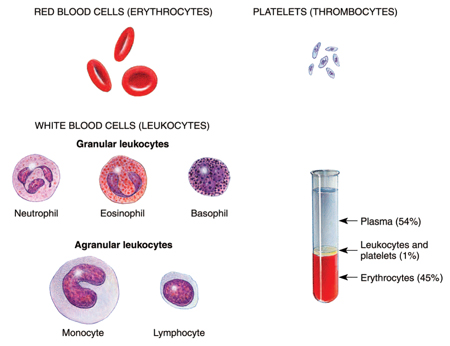Chronic Anemia
Can I Get Social Security Disability Benefits for Chronic Anemia?
- About Chronic Anemia
- How to Get Disability Benefits for Chronic Anemia by Meeting a Listing
- Residual Functional Capacity Assessment for Chronic Anemia
- Getting Your Doctor’s Medical Opinion about What You Can Still Do
If you have chronic anemia, Social Security disability benefits may be available. To determine whether you are disabled by your chronic anemia, the Social Security Administration first considers whether it is severe enough to meet or equal a listing at Step 3 of the Sequential Evaluation Process. See How to Get Disability Benefits for Chronic Anemia by Meeting a Listing. If you meet or equal a listing because of your anemia, you are considered disabled. If your anemia is not severe enough to equal or meet a listing, the Social Security Administration must assess your residual functional capacity (RFC) (the work you can still do, despite the anemia), to determine whether you qualify for disability benefits at Step 4 and Step 5 of the Sequential Evaluation Process.
About Chronic Anemia and Disability
Anemia is a condition in which there is a decrease in circulating hemoglobin, the chemical that combines with oxygen and carries it to cells. Since red blood cells contain hemoglobin, the severity of anemia is usually gauged by the hematocrit (Hct), which is the percentage of red cells in a volume of blood. In women, a normal hematocrit (at sea level) is about 38–44% and in men about 42–48%. Physical exertion requires increased blood flow for oxygenation of both the heart muscle and the skeletal muscles. A person with a low hematocrit will need a faster heart and respiratory rate for a particular level of exertion so that, for example, a person’s maximum heart rate could be reached doing light work. To the extent that those demands cannot be met because of decreased oxygen carriers (red cells), symptoms of fatigue, weakness, and increased respiratory effort with shortness of breath will limit exercise capacity. These symptoms are not different than those of a normal person who reaches his or her limits of exercise capacity, but occur at a lower level of exertion because cardio-pulmonary reserves are decreased. Clearly, medium and heavy work would be impossible. However, each individual’s ability to adjust to the reduced oxygen-carrying capacity of the blood varies. Guidelines are difficult to conceive without considering individual claimants, particularly so because of the contribution to functional limitation that is imposed by the potentially large number of disorders that can cause anemia. See Residual Functional Capacity Assessment for Chronic Anemia.

Composition of Blood
Causes of Anemia
The Social Security Administration will evaluate the severity of your condition without considering the cause of your chronic anemia as a factor. There are so many possible specific causes of anemia that it would take an encyclopedia to list them. Normal hematocrits rise in relation to altitude. By far, the most common cause of anemia is iron deficiency in women. The following general categories may be helpful.
- Nutritional deficiency – Women are more frequently iron deficient than men because of menstrual blood loss. Poor diet contributes to inadequate iron replacement, and iron is critical to the formation of red blood cells: red cells carry hemoglobin of which iron is an important element. Copper deficiency can cause anemia. Vitamin B12, vitamin B6, vitamin C, vitamin E3, and folic acid deficiencies can result in anemia. Protein deficiency can result in anemia.
- Chronic blood loss from the GI tract – For example, bleeding from a peptic ulcer, esophageal varices, gastritis, diverticulosis of the colon; and inflammatory bowel diseases like ulcerative colitis or regional enteritis can cause GI bleeding. Slow bleeding can cause severe blood loss over a period of time.
- Chronic diseases – Chronic diseases in general impair the body’s ability to make red blood cells. For example, alcoholic cirrhosis and other severe chronic liver diseases often result in anemia. Chronic kidney disease causes anemia because the kidneys produce renal erythropoietin (EPO) which stimulates the bone marrow to make red blood cells.
- Severe infection – Severe bacterial and viral infections can result in reversible anemia with resolution of the infection. In malaria, a protozoan parasite destroys red blood cells (hemolysis).
- Immune diseases – Many immune diseases, such as systemic lupus erythematosus (SLE) and rheumatoid arthritis (RA) can cause either accelerated red blood cell destruction in the bloodstream (autoimmune hemolytic anemia) or suppression of red cell production in the bone marrow (aplastic anemia).
- Drugs – Some drugs can cause either aplastic anemia or immune hemolytic anemia. In aplastic anemia, the bone marrow production of red cells declines.
- Toxins – Snake venoms, toxins produced by bacteria, or other toxins can damage red cell production in the bone marrow or red cells in the peripheral circulation (blood).
- Chemicals – A large number of chemicals can have toxic effects on the bone marrow with resultant anemia.
- Genetic diseases – For example, abnormal blood hemoglobin (hemoglobinopathies) such as sickle cell anemia and thalassemia can cause anemia.
- Cancers – Malignancies affecting the bone marrow, such as leukemia and lymphoma, can cause severe anemia.
- Radiation – Radiation can damage the bone marrow and impair its ability to produce red blood cells.
Continue to How to Get Disability Benefits for Chronic Anemia by Meeting a Listing
